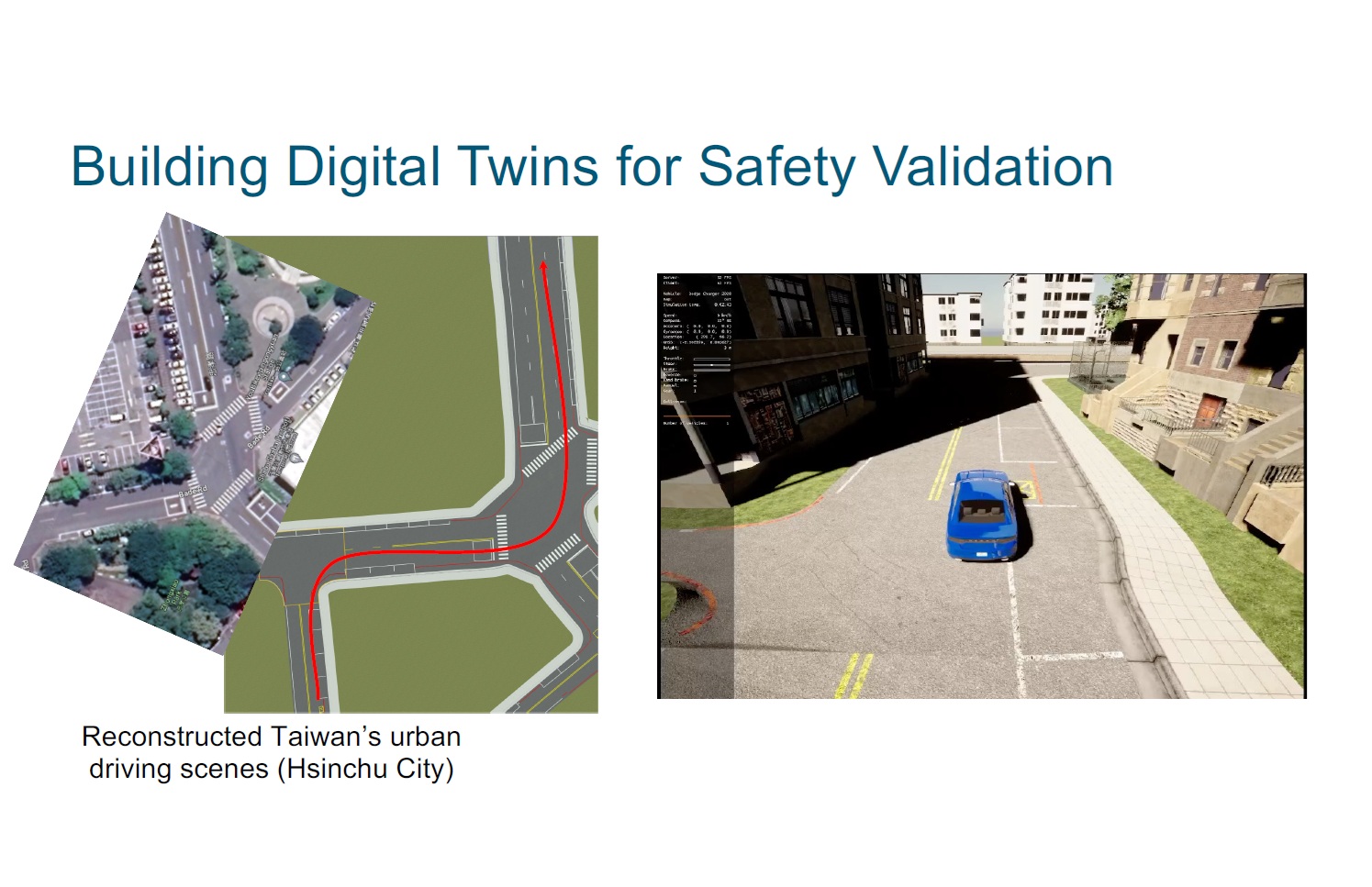Exploring the Safety Boundaries of Intelligent Driving Professor Yi-Ting Chen's Research on Scenario-Based Visual Risk Identification and Perception Technologies
- Published on
- Author
- 魏彣芯

With the rapid development of intelligent driving technologies, ensuring that systems can make safe and reasonable decisions in complex and dynamic environments has become a key concern for both academia and industry. Professor Yi-Ting Chen, Associate Professor in the Department of Computer Science at National Yang Ming Chiao Tung University, has long focused on research in visual risk object identification and performance evaluation. Leading the Human-Centered Intelligent Systems Lab, he approaches these challenges from a human factors perspective, striving to develop innovative frameworks that are both interpretable and practical, and laying a solid safety foundation for intelligent driving systems.
- RiskBench: A Scenario-based Risk Object Identification Benchmark
Existing methods for evaluating visual risk object identification algorithms often rely on the different datasets, making it difficult to comprehensively assess algorithmic performance. Moreover, most existing datasets lack scenario-based definitions grounded in real-world driving conditions, limiting the ability to verify algorithm efficacy and limitations.
To address these challenges, Professor Chen's team proposed RiskBench, a novel evaluation platform designed based on a scenario taxonomy. It supports systematic testing and algorithm benchmarking.
RiskBench categorizes risk scenarios into four major types:
- Interactive Risks: Situations requiring responses to dynamic risk objects (e.g., pedestrians crossing the street).
- Collision Risks: Scenarios where actual or potential collisions may occur.
- Obstacle Risks: Cases involving static obstacles or construction zones that block driving paths.
- Non-Interactive Scenarios: Normal driving conditions with no apparent risks.
To comprehensively evaluate algorithm performance, RiskBench introduces three key metrics:
- Risk Localization: Can the system accurately identify risk objects?
- Risk Anticipation: Can the system anticipate potential risks in advance?
- Planning Awareness: Can the identified risk facilitate decision-making?
This research was presented at the 2024 International Conference on Robotics and Automation (ICRA), along with the release of datasets and tools to the public. It provides a standardized testing platform for global academic and industrial communities, promoting research development and fair comparisons in risk recognition.
- Visual Risk Object Identification with Potential Field
Current behavior-change-based visual risk identification algorithms face two major challenges: limited modeling of scene semantics and road user behaviors, and insufficient computational efficiency for real-time applications.
To tackle these issues, Professor Chen's team developed a novel risk identification framework called PF-BCP (Potential Field as Scene Affordance for Behavior Change-Based Visual Risk Object Identification). The core idea of the framework is to model scene affordances using potential fields. Each object in the scene (e.g., pedestrians, vehicles) is assigned "attractive" or "repulsive" forces based on its spatial position and semantic labels, allowing the system to estimate its potential influence on the ego vehicle's path planning.
The system workflow is as follows:
First, it predicts the current driving goal. Then, it simulates the outcome of removing a specific object. If this removal changes the decision (e.g., from "stop" to "proceed"), that object is deemed a key risk factor impacting the decision.
To enhance computational efficiency, the team employed Bird's-Eye View (BEV) representations as the basis for potential field modeling. This approach supports parallel computation, significantly improving real-time performance. The results were presented at the 2025 International Conference on Robotics and Automation (ICRA) and accompanied by the release of related datasets and tools for international use.
- Uncertainty Modeling in BEV Semantic Segmentation via Gaussian Splatting
Transforming perspective-view images into BEV representations remains a challenge. Existing methods such as Lift-Splat-Shoot (LSS) rely on depth prediction for transformation, but face bottlenecks in both accuracy and computational efficiency, limiting their practical deployment.
To overcome these limitations, Professor Chen's team introduced a new BEV perception framework: GaussianLSS (Gaussian Splatting for BEV Perception). Instead of estimating a single depth point per pixel, the method assigns a Gaussian distribution to each pixel, incorporating uncertainty modeling. This approach enhances both the accuracy and robustness of spatial modeling.
The study was published at the 2025 IEEE/CVF Conference on Computer Vision and Pattern Recognition (CVPR), and the associated data and tools have been publicly released, advancing both research and practical applications in intelligent driving perception.
Conclusion: Toward Safer and More Interpretable Intelligent Driving Systems
From risk identification and benchmark construction to risk perception modeling, Professor Yi-Ting Chen and the Human-Centered Intelligent Systems Lab have been deeply engaged in addressing the critical safety challenges of intelligent driving systems. Their focus on scenario-based and interpretable design significantly improves the practicality, stability, and trustworthiness of algorithms in real-world driving environments.
Looking ahead, Professor Chen's team is committed to promoting open data, standardized testing platforms, and cross-institutional, international collaborations. Their goal is to help build a safe, transparent, and trustworthy intelligent transportation ecosystem. Their research not only injects key momentum into Taiwan's intelligent driving development but also contributes significantly to the global advancement of sustainable smart mobility.